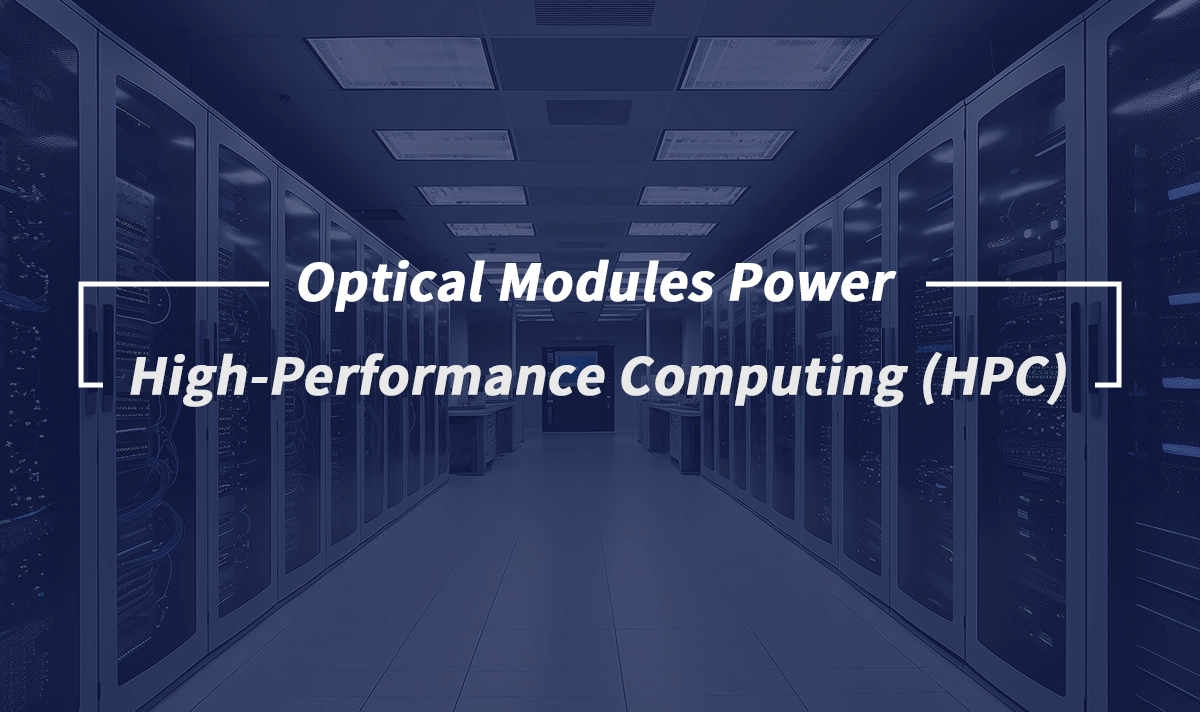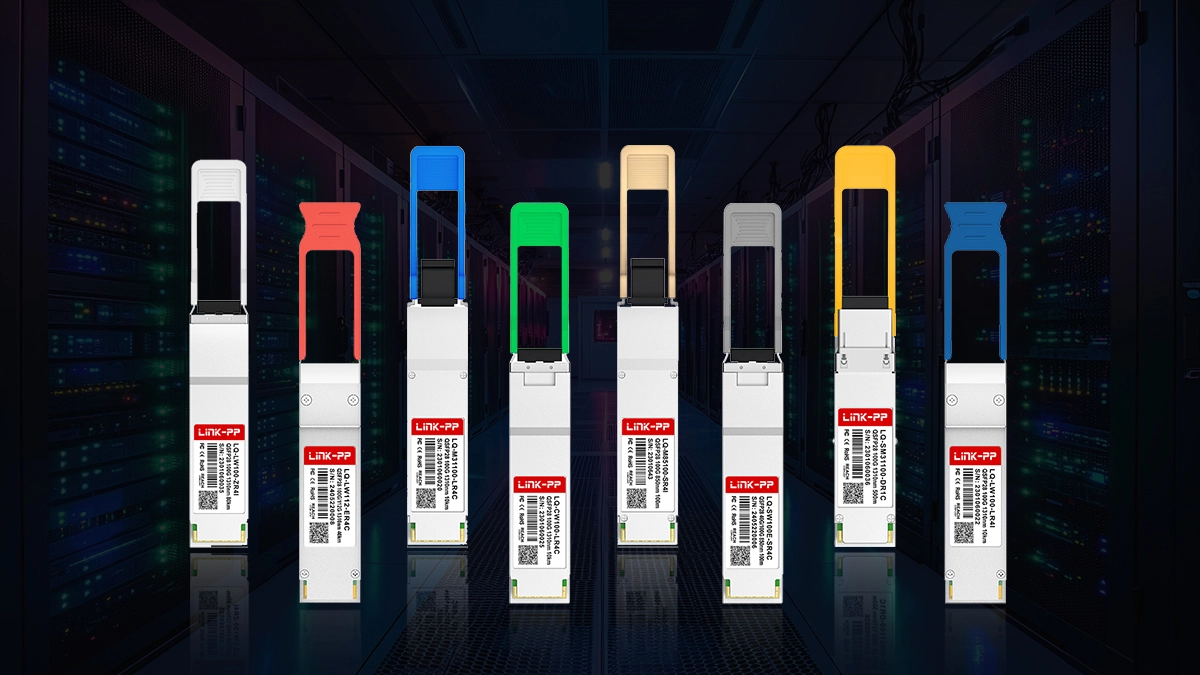
High-Performance Computing (HPC) is no longer confined to elite research labs. It drives breakthroughs in artificial intelligence (AI), climate modeling, drug discovery, and financial analytics. At the heart of every modern HPC cluster lies a critical, often underappreciated component: the optical transceiver module. These compact devices are the indispensable workhorses converting electrical signals into light pulses and back, enabling the unprecedented data transfer speeds and low latency that define contemporary supercomputing. Without them, exascale computing and complex AI training would simply stall. This article explores the vital role, evolving technologies, and future demands of optical transceivers in HPC environments.
➣ The Unrelenting Data Demands of HPC
HPC systems thrive on parallelism – connecting thousands, even millions, of CPUs and GPUs to work in concert. This architecture generates colossal data flows between nodes:
AI/ML Training: Massive datasets shuffle between GPUs during distributed training runs. Bottlenecks here drastically increase training time and cost.
Scientific Simulation: Fluid dynamics, molecular modeling, and cosmological simulations require constant exchange of partial results between nodes.
Big Data Analytics: Real-time processing of petabytes of data necessitates lightning-fast interconnects.
GPU Direct Communication: Technologies like NVIDIA NVLink and AMD Infinity Fabric rely on ultra-fast links, often extended optically between nodes or racks.
Copper cabling, once sufficient, hits fundamental physical limits (attenuation, crosstalk, bulk) beyond a few meters at multi-gigabit speeds. Optical transceiver modules provide the only viable solution for high-bandwidth, long-reach, energy-efficient connectivity within and between HPC racks and data halls. This is where high-speed data center optics become non-negotiable.
Is your HPC cluster's interconnect bandwidth becoming a bottleneck?
Explore LINK-PP's range of high-performance 400G and 800G optical solutions designed for demanding AI and simulation workloads. Source Now ➟
➣ Why Optics Dominate HPC Interconnects
Optical transceivers offer distinct advantages crucial for HPC performance and scalability:
Extreme Bandwidth: Single-mode and advanced multimode fibers support terabits per second of aggregate bandwidth using wavelength division multiplexing (WDM). 200G, 400G, and 800G optical modules are now standard in leading HPC deployments.
Ultra-Low Latency: Light travels faster than electrons over distance. Minimizing signal processing within the optical transceiver itself is key for HPC workloads sensitive to microseconds. Low-latency optical modules for AI clusters are a specialized niche.
Long Reach: Signals travel kilometers over fiber with minimal loss, enabling flexible data center architecture (e.g., Disaggregated Rack-Scale Design - DRSD) compared to copper's severe distance limitations. Long-reach optical transceivers for HPC connect geographically dispersed resources.
High Density & Scalability: Small form factors (QSFP-DD, OSFP) allow packing hundreds of high-speed ports into a single switch front panel, essential for scaling out massive clusters. High-density optical modules are critical.
Energy Efficiency (Gbps/Watt): While power-hungry themselves, optics enable overall system power reduction by replacing vast bundles of copper cables with thin fibers, reducing cooling needs and allowing more efficient switch ASIC designs. Optimizing power-efficient optical transceivers is a major focus for HPC data center sustainability.
➣ Key Optical Transceiver Types Powering HPC

Choosing the right module depends on reach, bandwidth, cost, and power targets:
Transceiver Form Factor | Common Speeds | Typical Reach (Multimode OM4/OM5) | Typical Reach (Single-Mode) | Primary HPC Use Case |
|---|---|---|---|---|
QSFP28 | 100G | 100m (SR4) | 10km (LR4), 40km (ER4) | Legacy Clusters, Storage Networks |
QSFP56 / QSFP56-DD | 200G | 100m (SR4) / 150m (SR4.2) | 10km (FR4/LR4) | Mainstream Compute/Storage Fabric |
QSFP-DD / OSFP | 400G, 800G | 100m (SR8/SR4.2) / 150m (SR4.2) | 2km (DR4), 10km (LR4/LR8) | Current AI/ML & HPC Fabric Backbone |
OSFP / QSFP-DD800 | 800G | 100m (SR8) | 500m (DR8), 2km (FR8/2xFR4) | Next-Gen Exascale & AI Systems |
SFP-DD | 50G, 100G (2x50G) | 100m (SR) | 10km (LR), 40km (ER) | Management, NIC Connections |
Critical Trends Shaping HPC Optics
The Rush to 800G and Beyond: As GPU clusters demand more interconnect bandwidth, 800G optical transceivers (like OSFP and QSFP-DD 800G form factors) are rapidly deploying. 1.6T optical modules are already in advanced development, targeting future exascale expansions.
Co-Packaged Optics (CPO): Moving the optical engine closer to the switch ASIC (on the same package substrate) promises significant reductions in power consumption and latency. While still maturing, CPO represents a potential paradigm shift for the densest AI/ML deployments. CPO in HPC is a key future watchpoint.
Linear Drive Pluggable Optics (LPO & CPO Lite): A near-term alternative to full CPO. LPO modules remove complex, power-hungry DSP chips within the module, relying instead on simplified linear amplification and DSP capabilities on the host switch board. This significantly reduces optical transceiver power consumption and cost, crucial for scaling AI clusters. LPO for AI networking is gaining rapid traction.
Integration with Accelerators: Direct optical connectivity to GPUs (bypassing the network interface card) is an active research area (optical modules for GPU direct communication), promising further latency reductions.
Emphasis on Power & Cost: Every watt saved on optics is a watt available for compute. Vendors like LINK-PP relentlessly focus on optimizing power-efficient optical transceivers and cost-effective HPC optics without compromising performance or reliability.
➣ LINK-PP: Delivering High-Performance Optics for Demanding HPC

Meeting the stringent demands of modern HPC requires optical modules built for speed, reliability, and efficiency. LINK-PP specializes in cutting-edge transceivers engineered for the most challenging data center and HPC environments.
For mainstream high-bandwidth HPC interconnects, the LINK-PP LQ-M85200-SR4C offers an exceptional balance of performance and power efficiency. Utilizing high-quality components and advanced DSP technology (or LPO variants upon request), it delivers robust 200G connectivity over multi-mode fiber reach to 100m, perfect for intra-campus HPC links or large data hall fabrics, while minimizing operational expenditure (OpEx).
For next-generation deployments pushing the bandwidth envelope, the LINK-PP QSFP-DD-800G-SR8 provides the necessary firepower. This high-density 800G module enables massive data throughput over OM4/OM5 multimode fiber up to 100m, ideal for top-of-rack (ToR) to leaf switch connectivity in AI/ML training clusters and exascale computing infrastructure. LINK-PP's rigorous testing ensures compatibility and reliability under sustained, heavy HPC workloads.
Choosing the Right Optical Partner for HPC Success
Selecting HPC optics isn't just about specs. Consider:
Proven Reliability & Quality: HPC runs are expensive; module failures are costly. Look for vendors with stringent quality control (MSA compliance, rigorous testing).
Performance Consistency: Modules must perform identically under load across thousands of ports.
Power Efficiency: Scrutinize power-per-Gbps metrics. Low-power optical modules for data centers directly impact PUE and OpEx.
Compatibility & Interoperability: Ensure modules are tested and guaranteed compatible with major switch vendors (Cisco, NVIDIA/Mellanox, Arista, Juniper) and fiber types.
Supply Chain & Support: HPC builds are complex. Choose a supplier with a stable supply chain and responsive technical support capable of addressing HPC infrastructure challenges. LINK-PP prioritizes all these aspects to be your trusted HPC optical solutions provider.
➣ Conclusion: Enabling the Future of Discovery
Optical transceiver modules are far more than simple connectivity components; they are the fundamental enablers of modern HPC achievement. As computational ambitions soar towards increasingly complex AI models and exascale simulations, the demands on the underlying optical network will only intensify. Innovations like 800G/1.6T speeds, LPO, and the potential of CPO are paving the way for the next leaps in scientific discovery and technological innovation. Investing in robust, high-performance, and efficient optical infrastructure, with partners like LINK-PP, is not just an IT decision – it's an investment in unlocking the future.
Don't let your optical network limit your computational potential. Discovering our full portfolio of cutting-edge, reliable optical transceivers engineered for the future of HPC and AI.
➣ FAQ
What is an optical module in high-performance computing?
An optical module is a device that turns electrical signals into light. It helps computers send data fast through fiber cables. These modules give high bandwidth and low latency in HPC systems.
Why do data centers prefer optical modules over copper cables?
Optical modules move data faster and farther than copper cables. They use less power and keep signals strong. Data centers pick them for better speed, energy savings, and steady connections.
How do silicon photonics improve optical modules?
Silicon photonics put lasers and detectors on one chip. This makes modules smaller, cheaper, and work better. It also lets data centers send more data using less power.
What are co-packaged optics, and why are they important?
Co-packaged optics put optical engines close to processors or switches. This setup lowers power use and latency. It helps data move faster, which is important for AI and HPC jobs.
Can optical modules help data centers scale for future needs?
Yes. Optical modules make it simple to add more servers and switches. They support faster speeds and use less power. This helps data centers grow and meet new computing needs.




